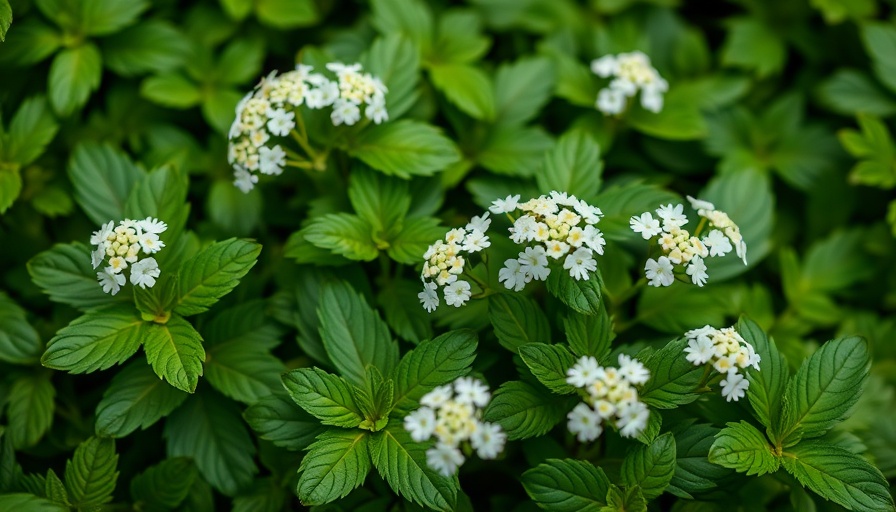
Unlocking the Secrets of Sweet Cicely: Your New Favorite Herb
While you may already be familiar with common herbs like basil or parsley, sweet cicely (Myrrhis odorata) is one aromatic gem that deserves a spot in your garden. Often referred to as anise root or sweet chervil, this delightful perennial herb not only enhances dishes with its unique flavor but also thrives in a variety of home garden settings. Join us as we explore the rich history, cultivation tips, and unique benefits of growing sweet cicely.
Herbal History: Why Sweet Cicely Matters
Native to central and southern Europe, sweet cicely has a storied past dating back centuries. Historically utilized in different cultures for its medicinal properties, gum from the roots was often consumed to alleviate digestive issues. But its distinctive flavor, reminiscent of anise and licorice, dominated its use in cooking and baking, especially in northern European cuisines. Today, sweet cicely is gaining renewed interest among modern herbalists and culinary enthusiasts alike, marking a return to natural, homegrown flavors.
The Right Conditions for Your Sweet Cicely
This adaptable herb thrives across USDA Hardiness Zones 3 to 7, making it accessible to a wide range of gardeners. Sweet cicely prefers organically-rich, well-draining soil with a pH of 4.5 to 7.4, situated in full sun to part shade. When planted, ensure they are spaced 24 inches apart to allow for their bushy growth, reaching heights of 2 to 5 feet.
Planting depth is key; whether growing from seed (½ inch deep) or transplanting, ensure they are well-adjusted in the soil. Proper care and conditions will recur for bountiful harvests season after season.
Harvesting and Using Sweet Cicely
With a growth maturity time of about 120 days, sweet cicely will reward your patience with an array of edible parts. Harvest leaves before blooming for the best flavor, and don't forget the delicate white flowers that can be used in salads or desserts! Its seeds resemble black pearls and can also be harvested for culinary applications. When appropriately preserved, sweet cicely can be added to teas or used for flavoring in winter months, extending its usefulness beyond the growing season.
Organic Gardening Hacks: Beating Pests with Sweet Cicely
One of the many reasons to love sweet cicely is its natural pest resistance. This herb not only thrives on moderate water needs but also repels common garden pests, allowing you to embrace a healthier, organic gardening practice. Growing sweet cicely among your vegetables can be a strategic move; its fragrant aroma can deter unwanted insects, thus forming a natural pest management system among your crops.
Community Connections: The Joy of Sharing Your Harvest
Growing sweet cicely might just spark joy beyond your backyard. Share your blossoming bounty with neighbors, or exchange herbs and culinary tips with friends. Community gardening can lead to deeper connections, as people come together to share not just seeds but stories. Envision evenings spent with friends, enjoying home-cooked dishes seasoned with sweet cicely while exchanging gardening hacks—what could be more fulfilling?
Becoming Self-Sufficient: The Benefits of Herb Gardening
Incorporating herbs like sweet cicely into your gardening should be a vital part of your journey towards self-sufficiency and sustainable living. By growing your own herbs, you not only accessible fresh flavors right from your backyard but also the satisfaction of cultivating food with your own hands. This exercise in patience and care fosters a stronger connection to nature and embodies eco-friendly practices.
Take Action: Start Your Sweet Cicely Adventure!
Are you ready to add this versatile herb to your gardening repertoire? Dive into the world of sweet cicely today! Its unique culinary and medicinal properties make it the perfect addition to your green space. Explore your local gardening shops or online retailers for seeds and explore creative recipes that highlight this flavorful herb. Your journey into self-sufficient gardening starts now, one plant at a time!
 Add Row
Add Row  Add
Add 




 Add Row
Add Row  Add
Add 

Write A Comment